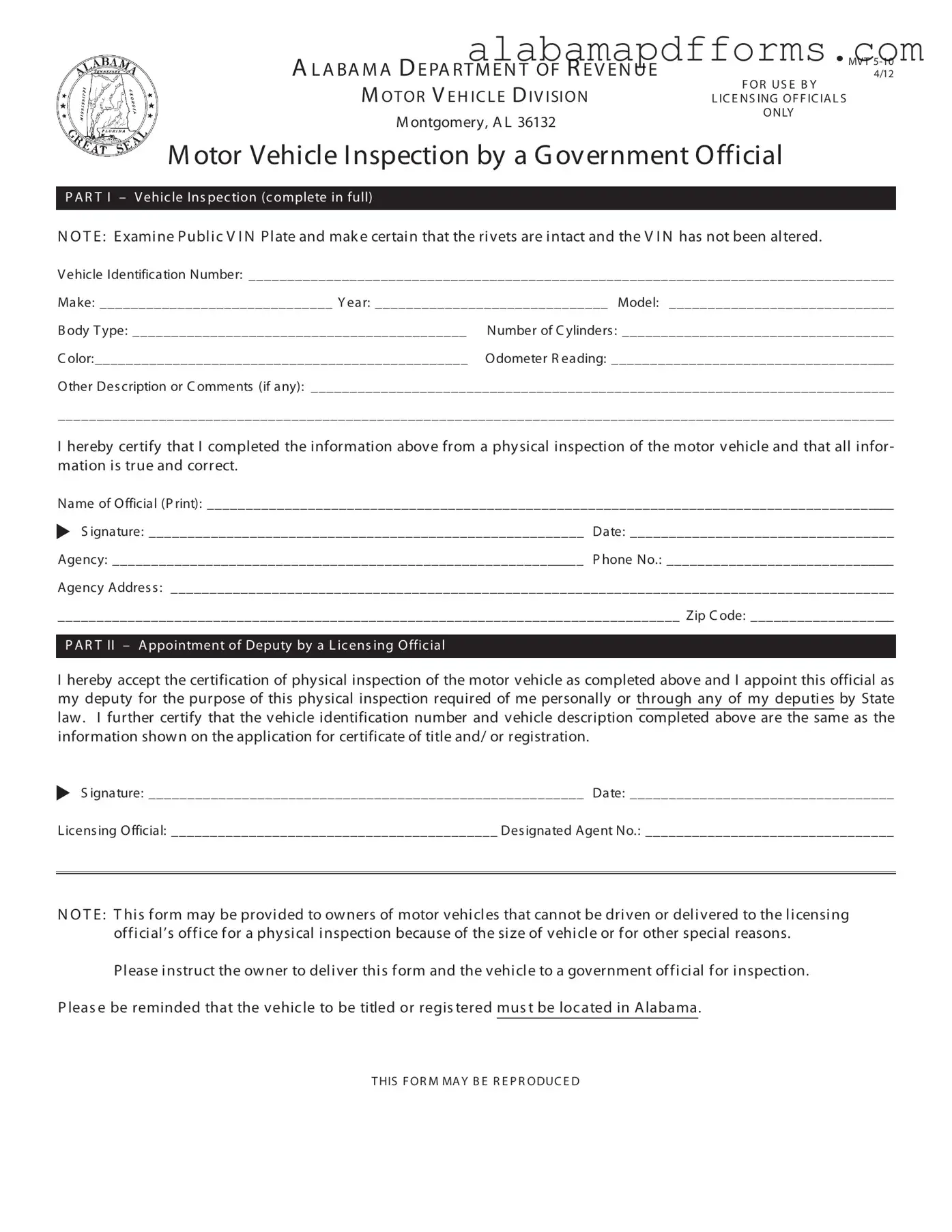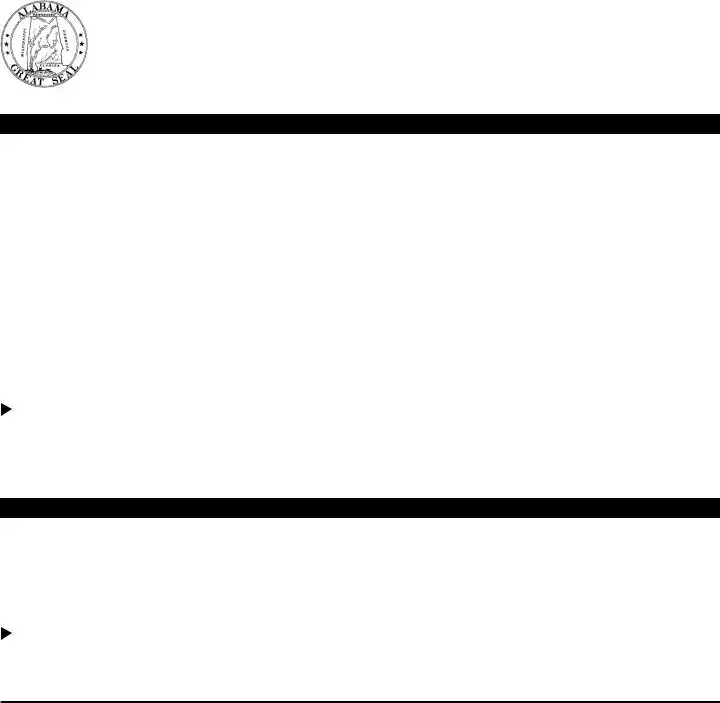The Alabama VIN Inspection form shares similarities with the Vehicle Title Application. Both documents serve as essential tools for verifying vehicle ownership and ensuring that the information provided is accurate. The Vehicle Title Application requires details about the vehicle, such as the VIN, make, model, and year, just like the Alabama VIN Inspection form. Additionally, both documents necessitate the signature of an official or authorized individual, affirming that the information has been reviewed and confirmed. This process helps protect against fraud and ensures that vehicles are correctly registered in the state.
Another document akin to the Alabama VIN Inspection form is the Bill of Sale. This document is crucial when transferring ownership of a vehicle, as it provides proof of the sale and includes important details like the VIN, make, model, and sale price. Much like the VIN Inspection form, the Bill of Sale must be completed accurately to prevent disputes over ownership. Both documents require signatures from the buyer and seller, reinforcing the legitimacy of the transaction and serving as a record for future reference.
The Salvage Title Application is another document that mirrors the Alabama VIN Inspection form in purpose and function. When a vehicle is declared a total loss by an insurance company, a Salvage Title is issued, which requires a VIN inspection to ensure that the vehicle's identity is verified. Similar to the VIN Inspection form, the Salvage Title Application must be completed by an authorized official, and it includes the vehicle's VIN and other identifying details. This process is vital for protecting buyers from purchasing stolen or misrepresented vehicles.
The Odometer Disclosure Statement is also comparable to the Alabama VIN Inspection form. This document is used during the sale of a vehicle to confirm the accurate mileage at the time of transfer. Like the VIN Inspection form, it requires the seller's signature and is often submitted alongside other registration documents. Both forms aim to protect consumers by ensuring that they receive clear and truthful information regarding the vehicle's condition and history.
The Motor Vehicle Registration Application aligns closely with the Alabama VIN Inspection form. This application is necessary for registering a vehicle with the state, and it requires similar information, such as the VIN, make, and model. Both documents must be filled out completely and accurately to ensure that the vehicle is registered correctly. Furthermore, both require an official's verification to confirm that the information provided is true, which helps maintain the integrity of the state's vehicle registration system.
The Vehicle History Report is another document that serves a similar purpose. While it is not a state-required form, it provides crucial information about a vehicle's past, including any accidents, title issues, or odometer discrepancies. Like the Alabama VIN Inspection form, it relies on the vehicle's VIN to compile its report. Both documents aim to protect consumers by offering transparency about a vehicle's history and ensuring that buyers are informed before making a purchase.
The Application for Duplicate Title also shares similarities with the Alabama VIN Inspection form. When a vehicle owner needs a replacement title due to loss or damage, they must complete this application, which often requires verification of the VIN. Like the VIN Inspection form, it helps ensure that the vehicle's identity is confirmed, preventing fraudulent claims for duplicate titles. Both documents emphasize the importance of accurate record-keeping in vehicle ownership.
The Vehicle Inspection Report is another document that resembles the Alabama VIN Inspection form. This report is generated after a vehicle undergoes a safety or emissions inspection. It includes details about the vehicle, such as the VIN and any issues identified during the inspection. Both forms serve to verify the vehicle's condition and ensure compliance with state regulations, thereby protecting consumers and promoting road safety.
In various legal contexts, it's essential for individuals to understand the significance of agreements that protect against potential liabilities. One such agreement is the Hold Harmless Agreement, which ensures that one party cannot hold another party responsible for specific risks, aligning closely with the intentions behind other forms like the Alabama VIN Inspection form, which is designed to establish vehicle identity and prevent fraud.
The Certificate of Title is also similar to the Alabama VIN Inspection form, as it serves as the official document proving ownership of a vehicle. The Certificate of Title includes the VIN, make, model, and owner information. Like the VIN Inspection form, it must be completed accurately and signed by the appropriate parties. Both documents are essential for ensuring that vehicle ownership is clearly established and legally recognized.
Finally, the Affidavit of Ownership is comparable to the Alabama VIN Inspection form in that it is used to assert ownership of a vehicle, particularly when traditional documentation is lacking. This affidavit requires the individual to provide details about the vehicle, including the VIN, and may need to be notarized. Both documents serve to confirm ownership and protect against potential disputes, emphasizing the importance of accurate and honest reporting in vehicle transactions.

